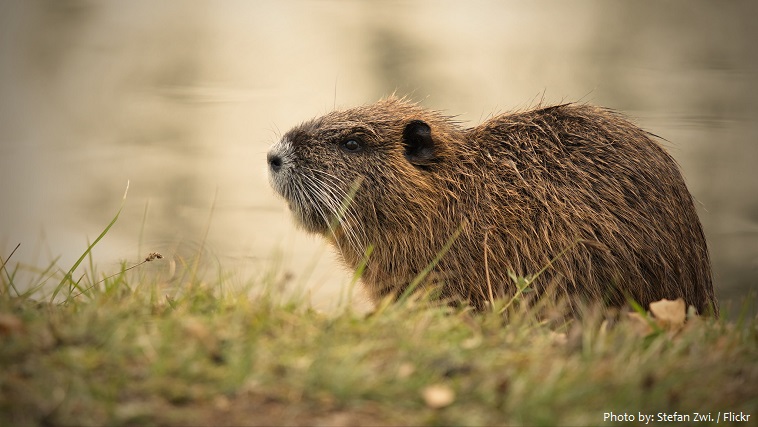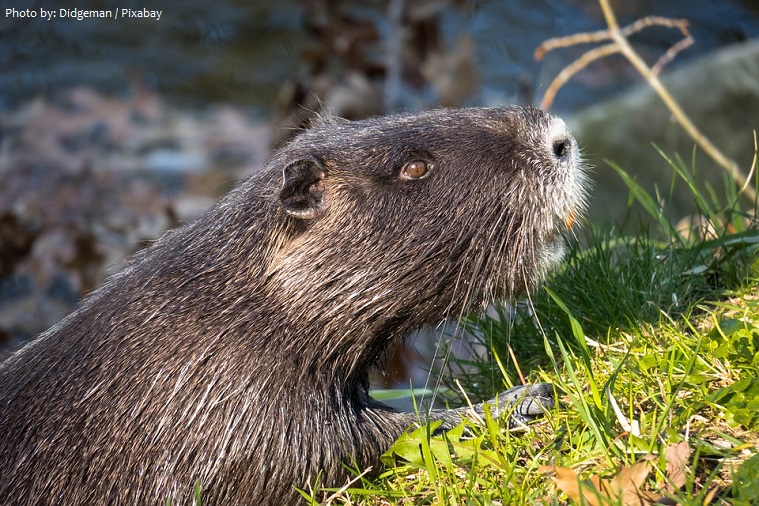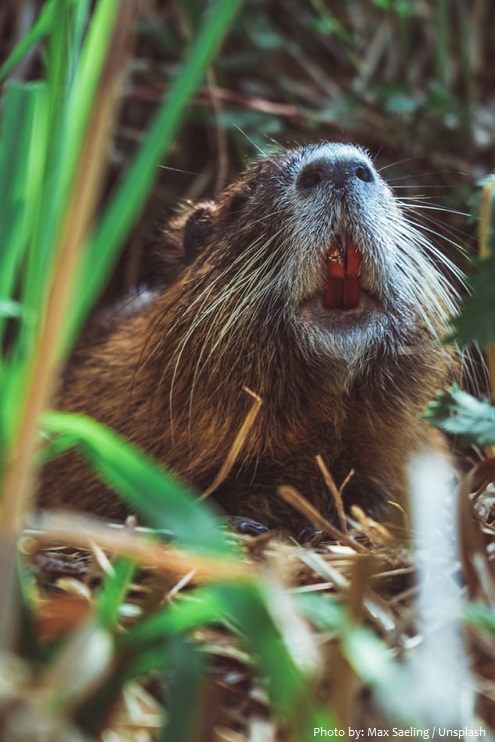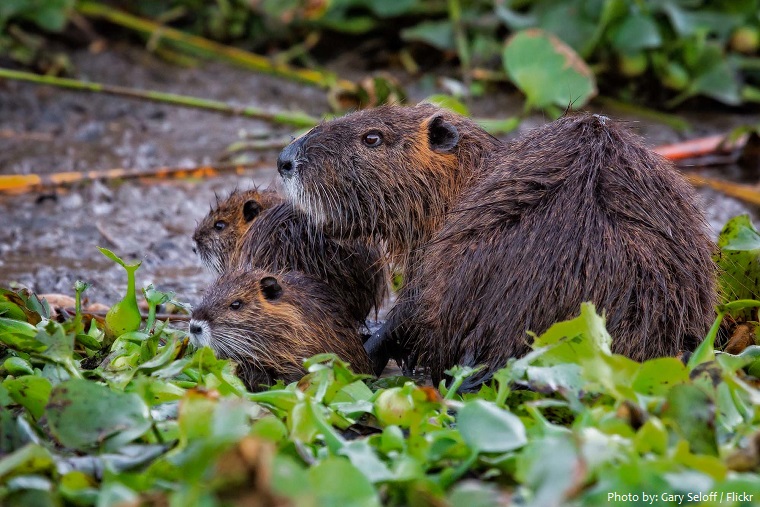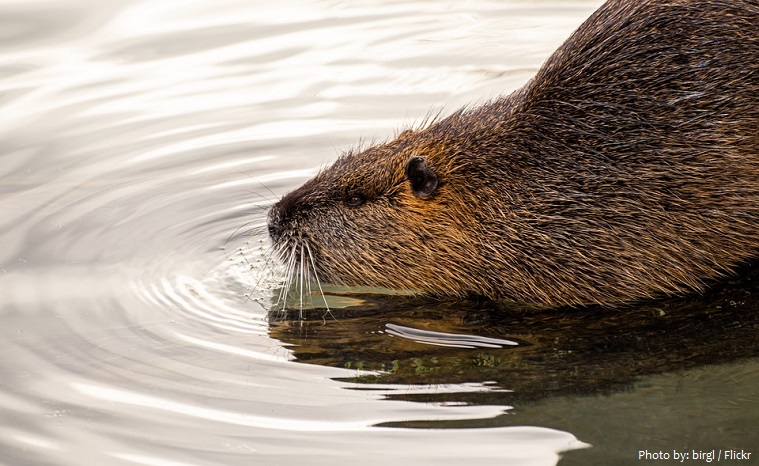The coypu (Myocastor coypus) also known as the nutria is a semiaquatic rodent.
Originally native to subtropical and temperate South America, it has since been introduced to North America, Europe, Asia, and Africa, primarily by fur farmers.
Coypus inhabit marshes, lake edges, and sluggish streams, especially in areas with emergent or succulent vegetation along the banks.
They are chiefly lowland animals, but may range up to 1,200 meters (3,940 feet) in the Andes.
The coypu has a robust body, short limbs, small eyes and ears, long whiskers, and a cylindrical, scaly tail.
It can weigh up to 17 kg (37.5 pounds), although 5 to 10 kg (11 to 22 lb) is usual; the body measures up to 70 cm (27.6 inches) long and the tail up to 45 cm (18 in).
The yellowish or reddish brown coat contains coarse guard hairs overlying soft, dense underfur.
Three distinguishing features are a white patch on the muzzle, webbed hind feet, and large, bright orange-yellow incisors.
It can close its mouth behind the incisor teeth, which allows it to cut submerged vegetation without swallowing water.
For shelter coypu construct burrows, which may be a simple tunnel or a complex system containing passages that extend 15 meters (50 feet) or more and chambers that hold crude nests of vegetation. Nutria also make runways through the grass and wander within a radius of about 180 meters (590 feet) of their dens.
The nutria is agile on land but is also a superb swimmer that can remain submerged for up to five minutes.
Coypus are mostly herbivorous. The diet consists largely of aquatic vegetation: stems, leaves, roots, and even bark. Mussels and snails, however, are also part of the diet.
They are nocturnal in most regions but in winter are active during the day.
Coypus are very social creatures. Groups usually consists of 2 – 13 animals and are composed of related adult females, their offspring, and a large male. Young adult males are occasionally solitary.
They are nonseasonal breeders. The gestation period is about 130 days. Mean litter size in general varies from 3 to 6, although it may range from 1 to 13. They generally line nursery nests with grasses and soft reeds. Baby coypus are precocial, born fully furred and with open eyes; they can eat vegetation with their parents within hours of birth.
Coypus can live up to six years in captivity, but individuals uncommonly live past three years old; according to one study, 80% of coypus die within the first year, and less than 15% of a wild population is over three years old.
Although it is still hunted and trapped for its fur in some regions, its destructive burrowing and feeding habits often bring it into conflict with humans, and it is considered an invasive species.
The genus name Myocastor derives from the two Ancient Greek words μῦς (mûs), meaning “rat, mouse”, and κάστωρ (kástōr), meaning “beaver“. Literally, therefore, the name Myocastor means “beaver rat”.
The name “nutria” is from Spanish word nutria, meaning ‘otter’. It is generally used in North America, Asia, and throughout countries of the former Soviet Union; however, in most Spanish-speaking countries, the word “nutria” refers primarily to the otter. To avoid this ambiguity, the name “coypu” or “coipo” (derived from the Mapudungun language) is used in Latin America and parts of Europe.
A coypu is often mistaken for a muskrat, another widely dispersed, semiaquatic rodent that occupies the same wetland habitats.
It can also be mistaken for a small beaver, as beavers and coypus have very similar anatomies.
